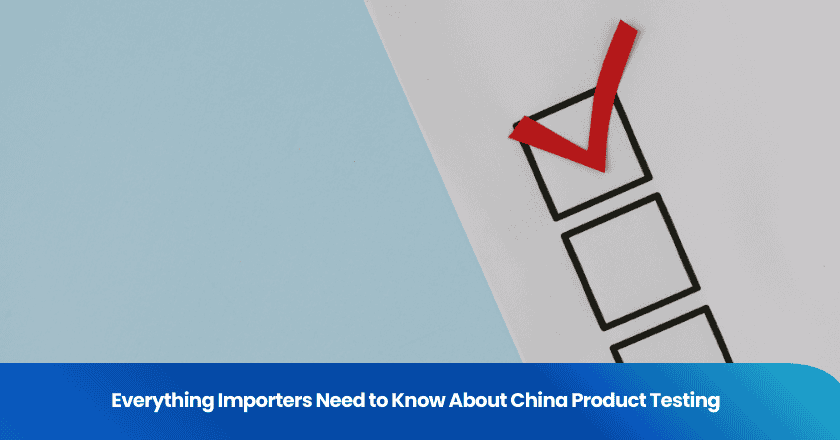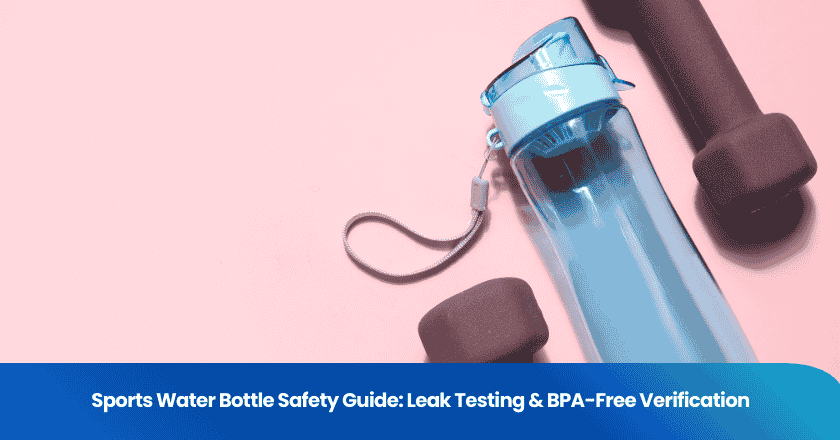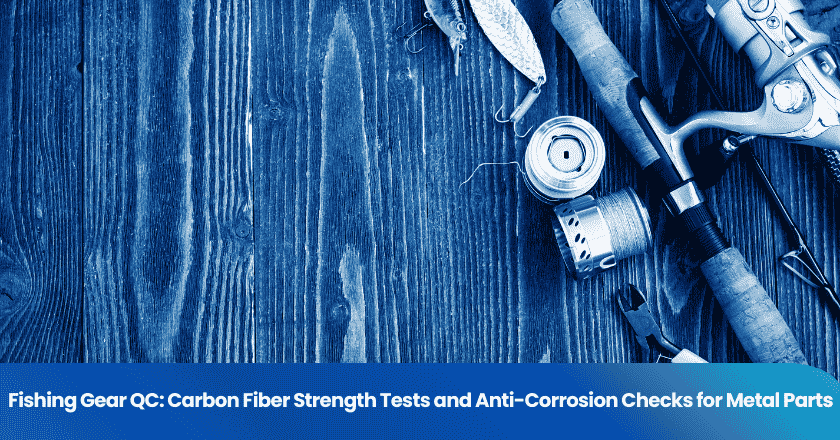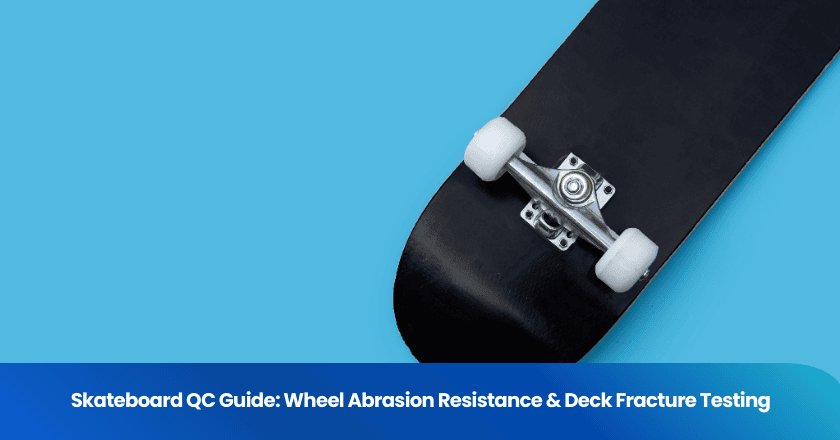
You need China product testing to ensure your product meets strict requirements before entry into global markets. As importers, you face complex regulations from China and your destination country. Compliance protects you from costly issues such as customs delays or product recalls. Failing to meet requirements can stop your goods at the border or lead to heavy fines. Proper testing in China gives your product a smooth entry and reduces risk.
Key Takeaways
- Always ensure your product meets both China and your destination country's regulations to avoid customs delays and fines.
- Work with accredited testing agencies and third-party inspectors in China to get reliable test results and maintain high quality.
- Keep detailed and organized documentation of all tests, inspections, and certifications to prove compliance and speed up customs clearance.
- Communicate clearly with your suppliers and inspection agencies to prevent misunderstandings and ensure your product meets all standards.
- Plan ahead for testing and inspections, stay updated on changing regulations, and address any issues quickly to avoid costly delays.
Regulations and Standards
China Product Compliance Testing
You must understand that China product compliance testing forms the foundation of your import process. Every product entering international markets faces strict regulations. These regulations exist to protect consumers and ensure product safety. You need to follow the standards set by both China and your destination country. Product compliance testing checks if your goods meet all technical and safety requirements. You should always verify the latest regulatory updates before shipping. Testing covers electrical safety, chemical content, mechanical strength, and labeling. You must document every step of the testing process. This documentation proves your commitment to compliance and helps you avoid legal issues. You should work with accredited laboratories in China for reliable results. These labs know the local standards and international requirements. You can use their expertise to navigate complex regulations and certification procedures.
CCC, AQL, ISO
You will encounter several important standards and certifications during China product compliance testing. The China compulsory certification, known as CCC, applies to many products such as electronics, toys, and automotive parts. You must obtain CCC certification before exporting these items from China. This process involves rigorous product compliance testing and factory audits. Another key standard is AQL, or Acceptable Quality Limit. AQL sets the maximum number of defective items allowed in a batch. You use AQL to guide your quality inspections and ensure your product meets market expectations. ISO standards also play a major role in product compliance testing. ISO standards cover quality management, environmental management, and product safety. You should check which ISO standards apply to your product category. Meeting these standards shows your commitment to quality and compliance. You must keep all certification records organized and ready for inspection.
Tip: Always request official certificates and test reports from your suppliers. This step helps you confirm that your product meets all regulatory requirements.
Import Country Rules
You must pay close attention to the regulations of your target market. Each country sets its own product compliance testing requirements and standards. For example, the European Union enforces the General Product Safety Regulation and requires CE marking for many products. CE marking shows that your product meets EU safety, health, and environmental protection standards. In the United States, you must comply with federal and state regulations, which may include specific testing and certification. You should also understand the product liability framework in your destination country. This framework holds you responsible for any harm caused by non-compliant products. You need to stay updated on regulatory changes and adapt your compliance strategy as needed. You can consult with local authorities or regulatory experts to clarify complex requirements. Always align your product compliance testing with both China and import country standards to avoid costly delays or penalties.
| Key Regulatory Standards | Description |
|---|---|
| CCC (China Compulsory Certification) | Mandatory for many products exported from china |
| AQL (Acceptable Quality Limit) | Sets quality thresholds for batch inspections |
| ISO Standards | International standards for quality, safety, and management |
| CE Marking | Required for products sold in the EU |
| General Product Safety Regulation | Ensures product safety in the EU market |
You must treat regulatory compliance as an ongoing process. Regulations and standards change frequently. You should review your product compliance testing procedures regularly and update your documentation. This proactive approach helps you maintain market access and protect your business reputation.
Testing Process
Preparation
You start the China product testing process by preparing your product and documentation. Preparation ensures you avoid costly mistakes later. Gather all technical files, product specifications, and previous test reports. You should review the requirements for your target market and confirm which standards apply. Create a checklist for each step, including pre-shipment inspections, quality inspection and testing, and documentation. Preparation also involves clear communication with your supplier in China. You must explain your quality expectations and testing needs. This step helps prevent misunderstandings and delays during inspection or testing.
Tip: Early preparation reduces the risk of missing documents or failing to meet regulatory standards.
Accredited Agencies in China
You need to select accredited testing agencies for reliable results. These agencies have official recognition and follow strict protocols for quality inspection and testing. Accredited agencies in China understand both local and international standards. They provide accurate testing, inspection, and certification services. You should verify the agency’s credentials before sending your product for testing. Ask for their accreditation certificates and check their experience with your product type. Working with accredited testing agencies ensures your product meets all compliance requirements and passes pre-shipment inspections.
Types of Tests
You must choose the right types of tests for your product. Testing covers many areas, such as safety, performance, chemical composition, and durability. For electrical products, you need electrical safety and electromagnetic compatibility tests. Toys require mechanical and chemical safety testing. Food contact materials need migration and contamination tests. You should also arrange pre-shipment inspections to check product quality before shipping. These inspections confirm that your product matches the approved sample and meets your quality standards. Some products require a pre-shipment inspection certificate for customs clearance. Always match the testing type to your product’s category and destination market.
| Test Type | Purpose | When to Use |
|---|---|---|
| Safety Testing | Ensures product safety | Before export |
| Performance Testing | Confirms product functions as intended | During production |
| Chemical Testing | Checks for hazardous substances | Before shipment |
| Pre-shipment Inspections | Verifies quality and quantity | Before loading/export |
Documentation
You must keep detailed documentation for every stage of China product testing. Documentation includes test reports, inspection records, certificates, and quality control checklists. Accurate records prove your compliance during customs clearance and market entry. You should store all documents in a secure and accessible location. Many importers use cloud-based quality management platforms for this purpose. These platforms help you organize, share, and retrieve documents quickly. Transparent documentation supports your claims during disputes or audits. Always request original copies of test reports and inspection certificates from your testing agency.
Note: Incomplete or missing documentation can cause customs delays or rejection of your shipment.
Reviewing Results
You need to review all testing and inspection results before approving shipment. Check each report for accuracy and completeness. Compare the results with your product specifications and regulatory requirements. If you find any non-conformities, address them immediately with your supplier or testing agency. Reviewing results helps you catch issues early and avoid problems at the border. You should also verify that you have received the pre-shipment inspection certificate if required. This certificate proves your product passed final quality checks and meets import standards. Regularly reviewing results strengthens your quality control process and builds trust with your customers.
Alert: Never ship your product without reviewing all inspection and testing results. This step protects your business from costly recalls or penalties.
Inspections and Quality Control
Third-Party Inspection Companies
You can strengthen quality control in China by hiring third-party inspection companies. These agencies offer independent inspection and quality inspection services at every stage of production. You gain an unbiased view of your product's quality and compliance with China regulations. Third-party inspectors conduct on-site inspections, review documentation, and verify that your supplier follows your requirements. You should always confirm that the agency has experience with your product type and understands the standards for your target market. Using third-party inspection companies helps you avoid costly mistakes and ensures your goods meet all quality expectations.
Pre-Shipment Inspections
Pre-shipment inspections play a critical role in quality control in China. You arrange these inspections before your goods leave the factory. Inspectors check product quality, packaging, labeling, and quantity. They compare the finished goods to your approved samples and specifications. Pre-shipment inspections help you catch defects early and prevent non-compliant products from reaching your customers. You should request detailed inspection reports and photos. These documents support your quality assurance process and provide proof of compliance during customs clearance.
Tip: Schedule pre-shipment inspections at least a few days before shipping to allow time for corrective actions if needed.
Commodity Inspection Services
You can use commodity inspection services to verify the quality and safety of bulk shipments. These services include quality inspection, sampling, and laboratory testing. Inspectors oversee the loading process, check export cartons, and ensure proper handling during transport. You should require inspectors to unpack random cartons and examine products for defects or damage. Commodity inspection services add another layer of quality control in China and help you meet strict import regulations.
| Inspection Step | Purpose | When to Perform |
|---|---|---|
| Pre-shipment inspections | Verify product quality and quantity | Before export |
| Quality inspection | Check compliance with standards | During and after production |
| Commodity inspection | Ensure safe transport and handling | Before and during shipping |
Verification with Chambers or Associations
You can enhance quality control in China by working with local chambers of commerce or industry associations. These organizations offer verification services and can recommend reputable inspection agencies. They help you confirm the legitimacy of your supplier and the accuracy of inspection reports. You may also access resources on best practices for pre-shipment inspections and quality inspection. Verification through chambers or associations builds trust in your supply chain and supports your compliance efforts.
Alert: Always keep records of all inspections, pre-shipment inspection services, and quality inspection reports. These documents protect you during disputes or audits.
Sourcing and Supplier Verification
Finding Suppliers in China
You begin sourcing products from China by building a list of potential suppliers. Start with reputable online platforms and trade directories. These resources help you identify manufacturers that specialize in your product category. Attend trade shows in China or join virtual exhibitions to expand your network. You can also ask industry contacts for recommendations. When you create your longlist, focus on suppliers with a proven track record in quality and compliance. Reliable suppliers often display certifications and export experience. Keep detailed notes on each candidate to streamline your selection process.
Tip: Use multiple sources to cross-check supplier information and avoid unreliable options.
Vetting and Verification
You must vet every supplier before making a commitment. Request business licenses, export certificates, and references from previous clients. Verify the supplier’s registration with local authorities in China. Many importers use third-party verification services to confirm factory locations and production capabilities. These checks help you avoid scams and ensure you work with legitimate partners. Ask for recent audit reports or inspection records. Review these documents to assess the supplier’s quality control systems. You should also schedule video calls or on-site visits to evaluate communication and professionalism.
Checklist for vetting suppliers:
- Business license verification
- Factory audit or inspection
- Reference checks
- Review of compliance records
Product Specifications
You need to provide clear product specifications to your supplier. Detailed specifications reduce misunderstandings and set expectations for quality. Include dimensions, materials, packaging, labeling, and required certifications. Make sure your product meets both China regulations and the standards of your target market. Regulatory barriers can affect your product’s entry into certain countries. Discuss these requirements with your supplier early in the process. Written specifications form the basis for quality control and product testing. Update your documents as regulations change to maintain compliance.
Alert: Incomplete or vague product specifications can lead to costly delays or non-compliant shipments.
Challenges
Regulatory Barriers
You often face regulatory barriers when importing products from China. Each country sets unique rules for product entry, and these rules change frequently. You must stay updated on the latest regulatory requirements for your product category. If you miss a new rule, your shipment may face delays or rejection at customs. You should work with local experts who understand both China and destination country regulations. Regularly review official government websites for updates. This approach helps you avoid surprises and supports maintaining compliance.
Documentation Issues
Missing or incorrect documents can stop your shipment at the border. You need to keep all inspection and testing records organized and accessible. Use a checklist to track each required document, such as test reports, inspection certificates, and shipping papers. Many importers use digital platforms to store and manage these files. If you find a missing document, contact your supplier or inspection agency immediately. Quick action reduces the risk of customs delays and protects your entry into the market.
Tip: Always double-check your documentation before scheduling pre-shipment inspections.
Communication Problems
Clear communication with your supplier and inspection agencies in China is essential. Misunderstandings can lead to incorrect testing or failed inspections. You should use simple language and confirm all details in writing. Schedule regular updates with your partners to track progress. If you notice a problem, address it quickly to prevent bigger issues. Good communication supports quality and ensures your product meets all safety and regulatory standards.
Delays and Solutions
Delays can happen at any stage, from testing to final inspections. You can reduce delays by planning early and booking pre-shipment inspections in advance. Keep a buffer in your timeline for unexpected issues. If you face a delay, contact your inspection agency and supplier to find solutions. Sometimes, you may need to arrange a second inspection or provide extra documents. Staying proactive helps you maintain compliance and achieve smooth entry for your goods.
| Challenge | Solution |
|---|---|
| Regulatory barriers | Stay updated, consult local experts |
| Documentation issues | Use checklists, digital management |
| Communication problems | Confirm details in writing, regular updates |
| Delays | Plan ahead, keep buffer time |
You improve your import process by following best practices in China product testing. Work with accredited agencies and third-party inspection companies to strengthen compliance and quality. Review all documentation before shipment and schedule regular inspections. Stay informed about changing regulations and invest in ongoing training. You protect your business and build trust with customers by maintaining high standards.
Tip: Set reminders to review compliance procedures and update your quality control checklist each quarter.
FAQ
What documents do you need for China product testing?
You need test reports, inspection certificates, product specifications, and shipping documents. Keep these organized and accessible. Digital platforms help you manage and retrieve files quickly.
How do you choose a reliable testing agency in China?
Check the agency’s accreditation and experience with your product type. Request their certificates and review client feedback. Accredited agencies follow strict protocols and provide trustworthy results.
When should you schedule pre-shipment inspections?
Schedule pre-shipment inspections after production finishes but before shipping. This timing allows you to catch defects and request corrections without delaying your shipment.
What happens if your product fails a compliance test?
If your product fails, contact your supplier and testing agency immediately. Address the issue, retest if needed, and update your documentation. Never ship non-compliant goods.
Can you use the same test reports for different countries?
You cannot always use the same reports. Each country sets unique standards. Confirm with your testing agency if your reports meet the requirements for every target market.
Grow your business with TradeAider Service
Click the button below to directly enter the TradeAider Service System. The simple steps from booking and payment to receiving reports are easy to operate.



